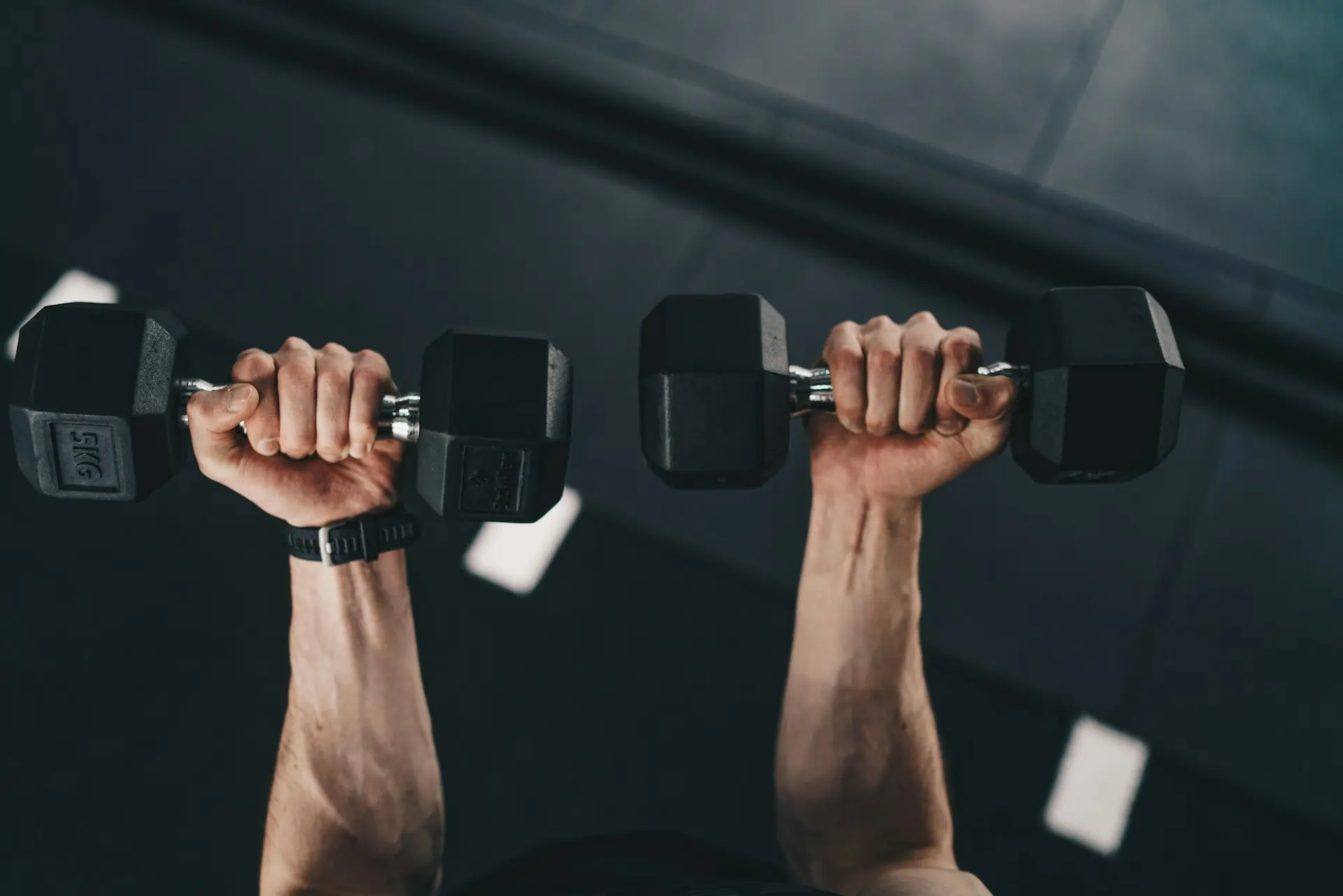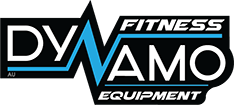
How to Start a Gym in Australia in 2025
The fitness industry in Australia continues to surge in 2025. Demand has moved beyond basic gym memberships. This demand creates a golden opportunity for anyone planning to start a gym business in Australia in 2025.
Recent financial data highlights the momentum. For example, Fitstop, one of Australia’s fastest-growing functional fitness brands, generates over €1.2 million in weekly revenue. This level of performance proves the depth of Australia’s fitness economy and the capacity of smart business models to scale.
This landscape creates an ideal launchpad for entrepreneurs ready to open a commercial gym in Australia. Yet entering the fitness market involves more than equipment selection or lease signing. You need a support system that simplifies fit-out, logistics, finance, and growth strategy.
Dynamo Commercial stands as a reliable partner in this journey. With over a decade of industry experience, Dynamo supports gym owners with premium commercial gym equipment, tailored financial solutions, and complete fit-out services.
In this detailed guide, you will learn how to start a gym business in Australia in 2025 with confidence, insight, and support built for long-term growth.
Why Start a Gym Business in Australia in 2025
Is Australia still a good fitness market in 2025?
Australia’s fitness economy remains one of the most attractive spaces for new business in 2025. This isn’t limited to major urban centers. Regional demand continues to rise, especially for specialised formats such as boutique studios, corporate wellness spaces, and functional training hubs.
Data points show strong consumer engagement and spending across these segments. According to The Courier-Mail and The Verge, Fitstop’s rapid expansion across the country confirms that scalable models thrive under current market conditions.
With over 100 locations and counting, Fitstop’s franchise growth showcases how well-structured gyms can attract consistent revenue streams and community loyalty.
In parallel, corporate wellness initiatives continue to grow. Businesses increasingly invest in employee well-being by sponsoring in-office training, memberships, or partnerships with nearby gyms. Functional training also captures attention.
More Australians favour workouts that improve mobility, endurance, and strength in practical ways. This shift boosts demand for open-floor gyms, multi-use rigs, and guided programming.
In this environment, launching a gym business in Australia in 2025 offers both purpose and profit.
Before Anything, Understand Regulations and Licensing
What are the legal requirements for opening a gym
Every gym in Australia must comply with a specific set of legal and operational requirements before opening its doors to the public. These include:
- Business registration
- Local council approvals
- Zoning laws
- Public safety compliance
- Mandatory insurance.
Registering your gym business
Register your business name with the Australian Business Register and apply for an Australian Business Number (ABN). This step helps formalise your venture and unlocks access to business banking, taxation, and finance.
Depending on your gym’s scale, you may register as a sole trader, partnership, or company. Each option affects tax handling and liability, so review your structure with an advisor.
Check Zoning Laws
Each state and council has planning schemes that classify fitness facilities differently. Some classify gyms under recreational use, while others may place them under health services. To confirm compliance, contact your local council before signing a lease or purchasing property. You may need to submit development applications, building permits, and operational plans for review.
Public Health and Safety Requirements
You must meet national and state-based codes for fire exits, lighting, ventilation, emergency response, hygiene, and accessibility. In many cases, you also need council health inspections before launch.
One common question is, How do I register with ABLIS?
The Australian Business Licence and Information Service (ABLIS) provides location-specific checklists. Use the ABLIS search tool to enter your gym type and postcode, and the system returns exact licensing requirements based on your location. This saves time and helps prevent missteps.
Another common question is, Do I need council approval for my gym?
In most cases, the answer depends on zoning and your facility’s impact. High-traffic gyms or facilities operating during early or late hours usually require more approvals than private training studios.
Do I need Insurance to open a gym in Australia?
You must also secure public liability and professional indemnity insurance. These protect you, your trainers, and your business if someone suffers injury on-site or makes a legal claim. In addition, you may register with a professional body such as Fitness Australia or AUSactive. While not mandatory, registration supports credibility, networking, and access to industry resources.
Financial Planning and Estimated Costs to Open a Gym in Australia

How much does it cost to open and run a gym in Australia?
Understanding your financial outlay is one of the most important steps before launching a gym business in Australia. Without a clear budget, business owners often face delays, debt, or limitations in growth. Planning your capital needs up front provides clarity, control, and confidence.
The start-up cost to open a gym in Australia ranges between AUD 150,000 and AUD 800,000. The variation depends on location, gym type, equipment, fit-out style, and lease terms.
A small private studio will cost far less than a full-scale commercial gym with group classes, recovery rooms, and cardio floors. You must also account for the monthly costs of running your own gym, which fall between AUD 10,000 and AUD 50,000. These include rent, salaries, utilities, software, equipment servicing, and marketing.
To guide your own estimate, use the table below:
| Category | Estimated Cost (AUD) |
|---|---|
| Rent (3–6 months) | 15,000 – 45,000 |
| Equipment | 50,000 – 150,000 |
| Fit-out | 20,000 – 100,000 |
| Licensing & Permits | 2,000 – 10,000 |
| Marketing Launch | 5,000 – 20,000 |
| Staff & Training | 10,000 – 30,000 |
| Contingency Buffer | 10,000 – 50,000 |
These figures reflect industry averages, though every gym requires careful planning. If you plan to lease high-performance machines or build a premium environment, costs may rise. You may also explore Dynamo Commercial’s leasing options to reduce your upfront investment while securing top-tier commercial fitness equipment.
Overall, strong financial planning sets the stage for running the business. With the right cost framework, you can attract members, cover expenses, and grow without pressure.
Financing Your Gym and Business Plan
In addition to equipment financing, you must select a business structure that suits your long-term goals. Two common options include registering as a sole trader or forming a company.
Sole traders benefit from a simple setup and full control. However, companies offer stronger liability protection and easier access to investment. Your choice affects everything from taxes and payroll to personal risk.
Businesses that aim to expand or employ staff often find company structures more suitable. In contrast, solo operators or trainers may prefer the speed and flexibility of a sole trader setup.
Before registering, seek advice from an accountant or business advisor. Your structure affects insurance, banking, and reporting. Once you confirm your model, you can proceed with confidence and create a clear financial plan for growth.
How can Dynamo Commercial help finance your gym?
New gym owners often face high upfront costs that can slow progress. To reduce that pressure, Dynamo Commercial offers flexible financing options that allow you to launch sooner while keeping cash flow stable.
One of the most popular solutions includes lease-to-own financing. This model allows you to access premium fitness equipment without a full purchase up front. Over time, you gain ownership while using the assets to grow your business. For many entrepreneurs, this option makes scaling easier and smarter.
You may also choose operating leases. These plans work well for gyms that prefer short-term flexibility. With terms between 12 to 60 months, you can access commercial-grade equipment for your facility while preserving working capital. At the end of the term, you can renew the lease, return the equipment, or upgrade to newer models.
Dynamo Commercial supports both new and expanding gyms with end-to-end solutions. You get equipment, fit-out expertise, and tailored finance packages—all under one roof.
Choose a Great Gym Location and Design a Layout
The location of the gym influences everything from foot traffic to member retention. A strong address gives your brand visibility, attracts the right target audience, and supports long-term revenue. For this reason, your location deserves close attention during the planning phase.
Perform Market Research
Start with a target market research. Review the population density, demographics, income level, and existing fitness competition in your target area. High-growth suburbs and commercial districts often present solid opportunities. However, crowded zones may require stronger branding or niche offerings.
Metro areas attract higher walk-in traffic and better access to partnerships. In contrast, suburban locations often offer more space at lower rent. For example, a boutique strength studio in inner Melbourne may operate with a 100-square-meter floor plan, while a multi-purpose gym in an Adelaide suburb may use triple the space for the same cost.
Use the following checklist to make an informed decision.
- Parking availability
- Zoning and council approvals
- Visibility and signage
- Public transport access
- Enough space for equipment, locker rooms, reception
Balance these variables based on your model. If your focus leans toward corporate clients or lunchtime workouts, target office precincts. If you aim to serve families or residential zones, look closer to schools or community hubs.
Once you lock your location, shift focus to layout and design. You must optimise every square meter for functionality and safety. Consider the following zones when planning gym layout:
- Strength zone
- Cardio section
- Group class room
- Functional training turf
- Staff office and member lounge
Tip: Work with experienced gym fit-out specialists. Dynamo Commercial can help design the floor plan, supply equipment, and ensure safety compliance.
Commercial Gym Equipment and Fit-out
The equipment you choose defines the experience your members will have. To create a high-performing gym, invest in machines and tools that cover cardio, strength, and functional training.
For cardio, start with commercial treadmills, air bikes, and rowing machines. These build stamina and boost fat burn. Many gyms include ellipticals and stair climbers to round out the cardio zone.
For strength training, commercial power racks, cable machines, and pin-loaded stations form the backbone. Add adjustable benches, dumbbells, barbells, and kettlebells to support both beginners and advanced lifters.
Functional training requires open space and multi-purpose gear. Include plyometric boxes, sleds, battle ropes, suspension kits, and resistance bands. These tools suit small group training, circuit classes, and personal training sessions.
Dynamo Commercial supplies all of these categories through partnerships with trusted brands like Intenza, Concept2, and Reeplex. These names stand for durability, innovation, and smooth performance. In turn, your gym delivers better sessions, lower maintenance costs, and stronger word of mouth.
To recap, start with the following essentials:
- Treadmills for cardio variety
- Power racks for barbell-based strength work
- Cable machines for safe, guided strength sessions
- Rigs for functional group workouts
- Flooring for shock absorption and safety
- Benches and dumbbells for flexibility and accessibility
- Storage units to maintain order and extend equipment life
Hiring and Staffing Strategy for Successful Gym Opening and Operations
Launching a gym requires a skilled team that can deliver smooth operations, great customer service, and consistent cleanliness from the first day. The size of your team depends on your gym model, but most businesses need a few key roles in place at the start.

Qualified Fitness Trainers
Hire qualified fitness trainers. They guide workouts, run group sessions, and build member trust. Look for certifications such as Certificate III or IV in Fitness, often offered by leading providers like the Australian Institute of Personal Trainers (AIPT).
Admin and Front Desk
Appoint an admin or front desk manager. This person manages member check-ins, bookings, payments, and enquiries. A professional welcome at the front desk improves first impressions and builds a friendly atmosphere.
Cleaning Staff
Your facility will also need cleaning staff. Hygiene drives member retention and safety. Daily cleaning keeps equipment sanitary and the environment fresh. In addition, plan for regular deep cleaning to meet health regulations.
You may also assign or outsource equipment maintenance. Machines perform better and last longer with timely servicing. Dynamo Commercial supports gym owners through nationwide service and maintenance programs. This keeps your machines in peak condition without burdening your internal team.
Marketing and Member Acquisition
Attract your first 100 members after opening the gym?
Winning your first 100 new customer base requires a marketing plan that reaches your local audience through multiple touchpoints. You must combine online visibility with community trust to market your gym.
SEO Marketing
Start with local SEO. Optimise your website for location-based searches by targeting keywords like “gym in Sydney” or “boutique gym Melbourne”. Add your gym’s name, address, and opening hours on Google Business Profile. Post photos, respond to reviews, and update content regularly. These actions help search engines rank you higher for nearby searches.
Build a simple website with key pages that include home, classes, trainers, contact, and location. Include lead forms or free trial offers to turn visits into conversions.
Social Media Marketing
Use social media to build awareness. Share behind-the-scenes content, trainer tips, and member stories on Instagram, Facebook, and YouTube Shorts. Tag local fitness businesses and encourage members to post check-ins and stories. This builds organic reach.
Social Proof
Collect and showcase reviews and testimonials. Early social proof builds credibility and lowers hesitation for new sign-ups. Ask satisfied trial users to leave Google or Facebook reviews.
Collaboration with Influencers
For a stronger reach, consider editorials. Collaborate with local wellness bloggers or newspapers. You can also share examples of Dynamo Commercial’s successful gym fit-outs to show industry credibility. Editorials act as third-party validation and boost authority.
Every channel you use should guide prospects to take action. The action can be: book a trial, visit your gym, or schedule a consultation. Clear calls to action combined with local relevance make it easier to reach your first 100 members and then scale beyond.
Profitability and Scale Plan
When will your gym become profitable?
Profitability depends on your setup costs, membership pricing, and monthly expenses. Most gyms break even once they reach 200 to 300 active members.
The time to reach this point varies. Gyms in high-density zones or with strong pre-launch campaigns often grow faster. Smaller studios in quiet areas may take longer. However, a focused revenue plan accelerates the path to profit.
You can unlock multiple income streams beyond monthly memberships. These include:
- Group classes
- One-on-one personal training
- Retail sales of supplements, apparel, or accessories
- Corporate wellness programs for local businesses
Use clear financial targets to track your performance. The table below outlines common metrics:
| KPI | Target Range |
|---|---|
| Membership Base | 250 – 300 |
| Average Revenue per Member | AUD 50 – 120 per month |
| Fixed Monthly Costs | AUD 10,000 – 30,000 |
| Variable Costs | Based on usage and staff |
| Break-even Timeline | 6 – 12 months (avg) |
Start Your Gym from Scratch in Australia
Success starts with a strong foundation. You need a successful business structure, financing, equipment, layout, staff, and marketing strategy. Each element supports the next, and each choice brings you closer to profitability and long-term growth.
Dynamo Commercial simplifies this journey. We provide commercial fitness equipment, leasing plans, professional fit-outs, and nationwide maintenance services designed for gym owners who want to grow with confidence.
To get started, book a consultation with Dynamo Commercial or visit one of our showrooms. We’ll help you design, equip, and launch a gym built for real performance.
